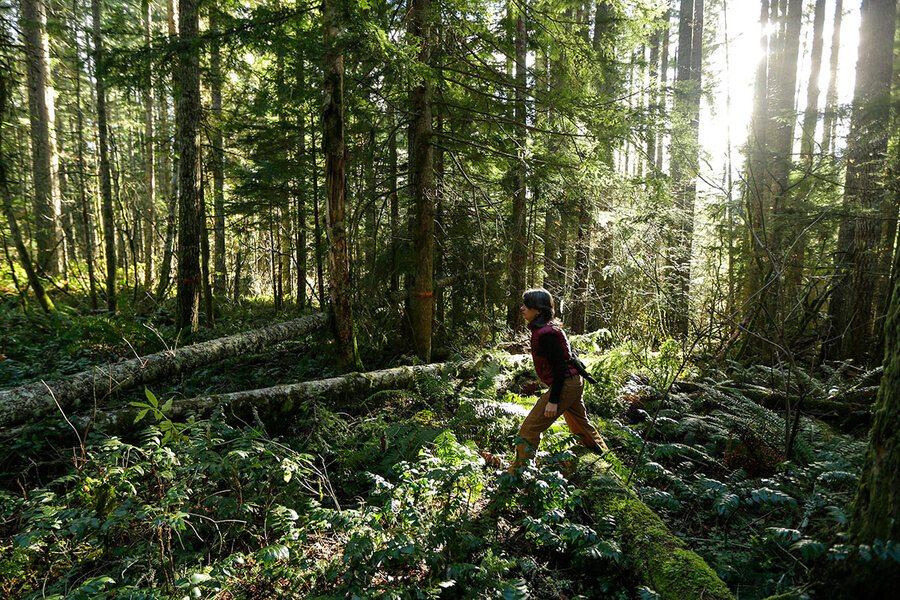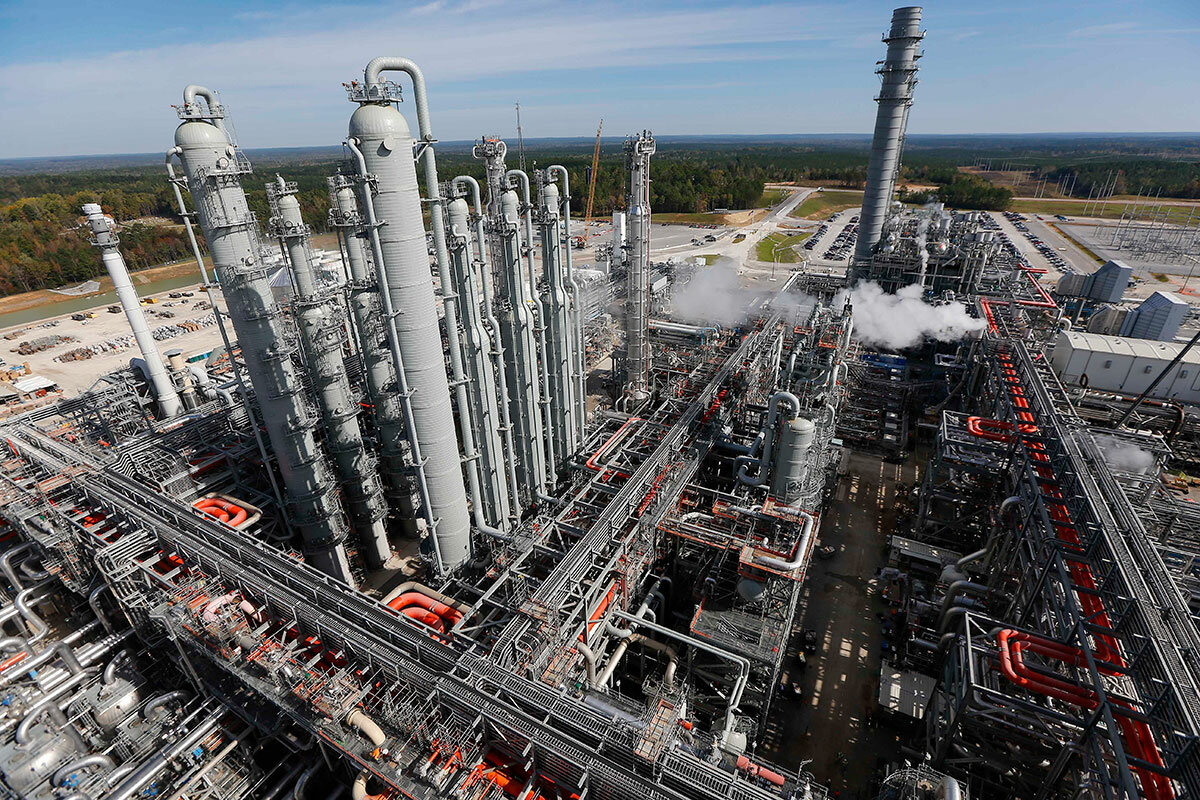Carbon offsets are growing fast, but climate benefits remain murky
Loading...
Over the past couple of years, hundreds of corporations from Amazon to Visa have announced plans to move toward “net-zero” greenhouse gas emissions.
Look more closely, though, and the promises also reflect something else: the growing prominence of a controversial environmental accounting tool generally known as “carbon offsets,” or “carbon credits.”
Supporters say these offsets are an important tool in the fight against global warming and also an increasingly important funding source for climate-friendly initiatives. Think of them as contracts that can be bought and sold, allowing projects that remove greenhouse gases to counteract emissions made somewhere else. Want to neutralize the impact of driving your gasoline-powered car? Carbon-offset programs make it seem as easy as ordering a mystery novel. Worried about the carbon impact of your flight? Offset programs say you can support a tree planting program in Bali to make up for it.
Why We Wrote This
Whether for a company or an individual, a zero-emission lifestyle is hard to achieve. That’s why a market for “offsets” is surging – and controversial.
But critics argue the offsets don’t reflect progress at all and instead are a new form of greenwashing. They warn that offsets may not actually reduce greenhouse gas emissions and are a distraction from the hard changes needed to decarbonize the economy – an effort scientists say is necessary to avoid catastrophic climate change.
They also criticize the voluntary offset market as unregulated and inconsistent – a situation policymakers have said they will try to address at the upcoming COP26 United Nations gathering on climate change in November.
“This is a messy area. There’s no question about it,” says Geoffrey Heal, an economics professor at Columbia University who focuses on the environment. “It hasn’t mattered until recently. But now the [voluntary offset] market is going to explode.”
Indeed, the carbon offset market appears poised for rapid growth. The Institute of International Finance’s task force on scaling voluntary carbon markets predicts that the demand for carbon credits will increase by a factor of 15 or more by 2030, and by a factor of up to 100 by 2050. Overall, it says, the carbon credit market could be worth more than $50 billion by 2030.
This summer, Michigan became the first U.S. state to develop a program to sell forestry-based offsets – pledging to manage a state forest in a way that will help pull carbon out of the atmosphere.
The carbon credit market is based on the premise that what matters for slowing climate change is the overall level of greenhouse gases in the atmosphere, not the reduction in any particular place. In other words, the Earth doesn’t care whether a reduction in carbon comes from changes within a Silicon Valley data center or from that data center restoring a mangrove forest in Brazil. Either way, there is less of the heat-trapping gas in the air.
The idea of exchanging carbon removal here for carbon emissions there is at the root of the “cap and trade” regulatory systems in Europe, California, and elsewhere. But it is only recently, says Peter Miller, director of the western region climate and clean energy program for the Natural Resources Defense Council, that it has become a focus of the private sector.
“With the acceleration of the climate crisis, there is a lot more interest in urgent action, both at the personal and the corporate level,” he says. “And one of the leading contenders for things people can do is to invest in offsets.”
But as Mr. Miller and many others point out, not all carbon credits are created equal. At this point, anyone can create an offset – all that’s needed is a willing buyer and seller. But whether that offset actually helps prevent climate change is a lot more complicated.
Much of this is because of how offsets work. There are very few projects that actively remove carbon from the atmosphere. (That process, called direct air capture, does exist, but it is still rare and relatively expensive.) More often, offsets promise to not release carbon. A forest-based offset program, for instance, claims to preserve trees that would otherwise be cut down. A clean power offset creates a wind turbine that wouldn’t have been built otherwise.
This concept is called “additionality,” and, as Cynthia Cummis of the World Resources Institute says, it is inherently difficult to prove.
“You’re always making an assessment based on a hypothetical scenario,” she says. “And I think that always will make you question what additional emission reductions are really being generated by a project.”
This is why it is important for companies to decarbonize their operations and value chains first, she says, and then use offsets only as a way to go “above and beyond.”
Indeed, as more and more prominent companies jump on the offset bandwagon, there has been increasing attention to whether their projects actually remove carbon as advertised – and more revelations of problems. A decade ago, a Monitor investigation found that carbon offset certificates presented to the Vatican were tied to forest projects that did not exist. More recently, investigative reports have raised other questions about offset projects, including this summer, when forests central to Microsoft’s emission reduction plan burned in the West’s raging wildfires, releasing the stored carbon into the atmosphere.
“There have been projects that people have looked into and found problems with and have damaged the reputation of the whole sector,” says Anastasia O’Rourke, managing director of the Yale Carbon Containment Lab at the Yale School of the Environment. Yet, she adds, “it doesn’t mean the whole thing is suspect.”
Dr. O’Rourke and others say there are ways to create viable offset programs that do, indeed, help reduce global carbon emissions. Although there are no legal requirements for proving the validity of voluntary offsets, there are a handful of prominent registries that claim to list only scientifically vetted and documented projects. There is also a growing ecosystem of private carbon offset developers, verifiers, and providers.
Bluesource, for instance, is a company that works with companies and organizations, from family farms to large corporations and global banks, to both develop offset programs and help reduce clients’ climate impact. This year, it announced that it had facilitated a partnership in which DTE, an energy company, would purchase offsets created by the Michigan Department of Natural Resource’s management of the Pigeon River Country State Forest. Rather than increase logging in the area, the state says, it will work with Bluesource to retain forest stock for its carbon absorbing potential.
To Kevin Townsend, Bluesource’s chief commercial officer, the project is an example of how offsets can bolster climate action and provide for other ecological benefits – and even, in this case, create a way for states to unlock new income streams.
Still, Mr. Townsend says he recognizes the skepticism around offsets and credits. Bluesource, though, uses the latest science and monitoring technologies to calculate and track the carbon storing potential of any offset project, he says. Any offset credit the company develops needs to be “additional, real, and verifiable,” he says – both for business, and for the climate.
“In the environmental space you take a lot of friendly fire,” Mr. Townsend says. “We do think market-based approaches are wise. They’re good because they’re scalable, they encourage other action. But we don’t think they’re the be all and end all. ... This is a really complicated problem, and we need all the solutions we can get.”
Editor's note: One sentence has been updated to more accurately convey critics’ views that carbon offsets are flawed.







